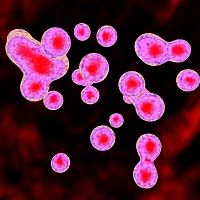Stem Cell Therapy Effective at 3 Years for Multiple Sclerosis Remission
Stem cell therapy for multiple sclerosis is effective at 3-year follow up, according to research published in JAMA Neurology.

High dose immunosuppressive therapy (HDIT) with autologous hematopoietic cell transplant (HCT) sustained relapsing remitting (RR) multiple sclerosis (MS) remission at 3 years, according to preliminary results published in JAMA Neurology.
Researchers from HALT MS study evaluated MS patients through 5 years after HCT in order to evaluate the safety, efficacy, and durability of MS disease stabilization through 3 years after HDIT/ HCT. This analysis is the pre specified 3 year interim from the trial, which enrolled 25 RRMS patients from various referral centers. The autologous peripheral blood stem cells grafts were CD34+ selected and then the participants received high dose treatment with carmustine, etoposide, cytarabine, and melphalan as well as rabbit antithymocyte globulin before autologous HCT.
The HALT MS trial aims for event free survival which the researchers defined as without death or disease activity from any one of the following: confirmed loss of neurologic function; clinical relapse; or new lesions observed on magnetic resonance imaging (MRI). The toxic effects were reported using the National Cancer Institute Common Terminology Criteria for Adverse Events.
“Theoretically, if you look at identical twins where one twin has MS, 75 percent of the time the other twin doesn’t have MS,” study co author Michael Racke, MD, said in a news release. “What we’re trying to do is make an MS patient their own identical twin that doesn’t have MS.”
All but 1 of the patients received HDIT/ HCT, and the median follow up period was 186 weeks. At the 3 year follow up point, the overall event free survival rate 78.4 percent, while progression free survival and clinical relapse free survival rates were 90.0 percent and 86.3 percent, respectively. No acute treatment related neurologic adverse events were observed by the researchers. The general adverse events recorded were consistent with the expected toxic effects that are typically linked to HDIT/ HCT, the researchers wrote. The patients showed improvements in neurologic disability, quality of life, and functional scores.
“At 3 years, HDIT/HCT without maintenance therapy was effective for inducing sustained remission of active RRMS and was associated with improvements in neurologic function,” the authors concluded. “Treatment was associated with few serious early complications or unexpected adverse events.”